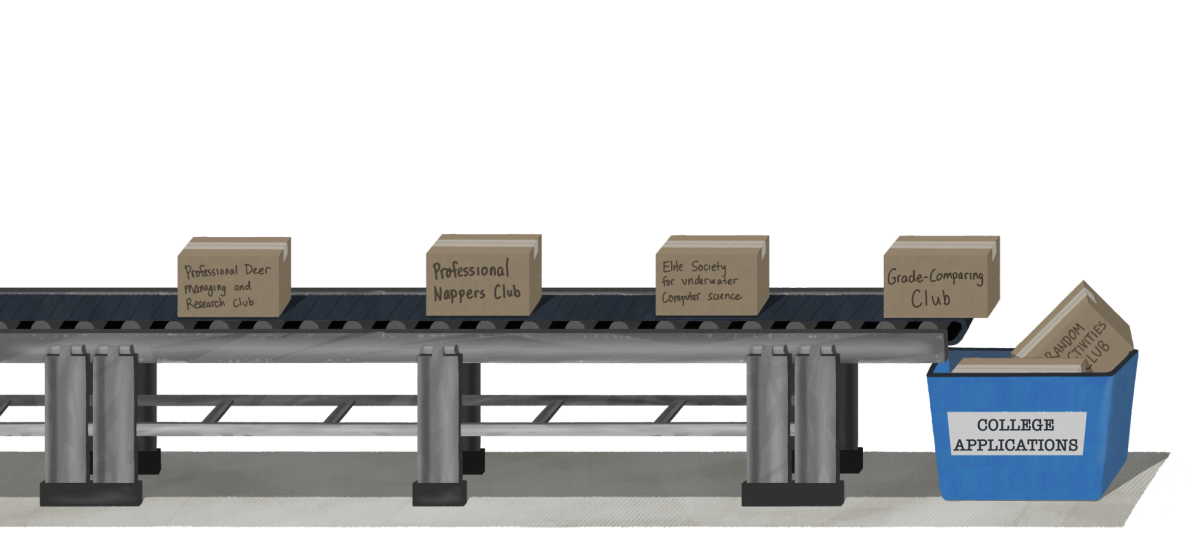Written by Catalina Zhao and Boot Bullwinkle
Pro:
After completing 16 laps around the sun, teenagers finally become eligible to get behind the wheels of a car and put the pedal to the metal. It’s in every teenager’s best interest to take advantage of every opportunity to drive because it gives them increased responsibility and freedom.
With a car, getting from Point A to Point B couldn’t be easier. For about $65, the average car can go between 400 to 500 miles, and a fuel-efficient car could travel 600 miles for the same price. Instead of relying on parents or a bike, a person could get their homework before the next class, pick up lunch with some friends and avoid the California-style freezing mornings, scorching afternoons and rainy days.
It’s not cheap to go to a party without the escort of parental figures—gas, maintenance and food prices can dwindle a wallet rather expeditiously. Owning a car teaches a person to make sacrifices because they are responsible for the upkeep of a multi-thousand dollar luxury item. According to Laurence Steinburg, Ph.D., for Edmunds.com, when a teenager gets a car, he takes on many responsibilities similar to those of adults. It’s a valuable lesson to learn, and the resulting freedom of driving with the windows down and music playing is oh-so-enthralling.
Many people would say that having a car as a teenager is dangerous; there is no denying that. With different variables and distractions plaguing the driver from their attention to the road, it is no wonder that six percent of 16 year olds are involved in car crashes each year. According to the California Department of Motor Vehicles, this is a figure that is 3.7 times greater than that of other age groups.
However, the other 94 percent of teenagers with cars who didn’t get into accidents are proof that teenagers do have the capability to be responsible young adults. Upon passing the driving test, teenagers earn the privilege to drive in trust that they won’t make reckless decisions like disobeying traffic laws, texting while driving and driving under the influence. Most are responsible enough to be trusted with a two-ton automobile, and they should take advantage of this privilege.
Having a car opens up an enormous amount of opportunity for a teenager to grow and experience personal freedom and responsibility. Any teenager with access to a car should take full advantage of this privilege.
Con:
Many teenagers eagerly await their 16th birthday, when they reach eligibility to earn the coveted driver’s license. The exhilarating feeling of freedom that comes with a new Toyota Corolla, music blasting out of open windows and jingling keys on a new lanyard are only some of the many appeals that bring teens to desire for their very own car. However, having a car as a teen has numerous downsides that outweigh its allure.
With the current economic struggles, many families try to spend less to cope with the nation¡¯s financial situation. A teen who owns a car does not do the average American family¡¯s budget any favors. Teens have to pay for expensive gasoline,
car maintenance and insurance, parking fees and permits and the actual vehicle. A study by the American Automobile Association shows that the average yearly cost to own and operate a sedan or minivan is $9,000 while an SUV is more than $11,000. Teenagers with cars have to worry about these hefty numbers, and even if one’s parents cover the costs, the expenses are still unreasonably steep for the family. No family wants to pay thousands of dollars for the costs associated with a teen car.
Apart from the financial burdens, having a car as a teen is dangerous. Driving inexperience, distractions and recklessness cause teens to break traffic laws and regulations designed for their safety, often resulting in fatal accidents. According to the California Department of Motor Vehicles, 16- to 19-year-old drivers “have the highest average annual crash and traffic violation rates of any other age group.” The National Vital Statistics System also revealed that motor vehicle accidents are the leading cause of teenage death. No matter how safe a teenage driver is, he or she is in potential danger of hurting others or being hurt by other drivers.
Although advocates of teen ownership may argue that having a car helps teens become more responsible, there are multiple other venues for teens to take on responsibility. Teens can become more accountable and mature through less risky activities such as taking a job, starting a club or organizing a community event. They do not have to start driving a car at such a young age for more responsibility.
Teenagers should not jump to wanting a car as soon as they receive their license. Before taking the new car for a drive, a teen should first consider the financial and safety drawbacks that come with the car.












Jane Ambrose • Jul 17, 2017 at 10:05 am
My oldest daughter is going to be turning 16 soon and my husband and I are trying to decide if we are going to allow her to get her license and own a car. While there are definite safety precautions that should be taken, after reading this article it sounds to me like having the freedom of driving will help my daughter learn really important life lessons. It’s a really good point that it will enable teenagers to learn to manage the cost of driving and owning a vehicle. Thanks!